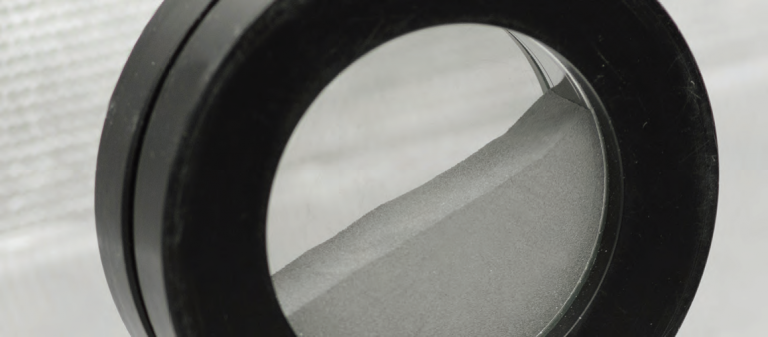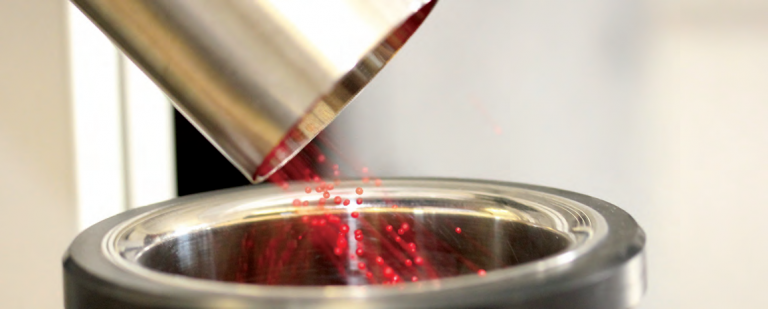Blog
Additive Manufacturing Process Optimisation Workflow
Granutools is proud to introduce the revolutionary workflow for the process optimization of 3D printing. The workflow is essential for parts producers, 3D printer manufacturers and powder companies.
Workflow For Process Optimisation
Granutools is proud to introduce the revolutionary workflow for the process optimization of 3D printing. The workflow is essential for parts producers, 3D printer manufacturers and powder companies. The workflow consists of the unique combination of the following three instruments for AM processs optimization.
Workflow = GranuDrum + GranuPack + GranuCharge
Which Flowmeter for powder-bed-based additive manufacturing?
In SLS (selective laser sintering), SLM (selective laser melting) and EBM (electron beam melting) techniques, successive thin layers of powder are created with a ruler or with a rotating cylinder. Each layer is partially sintered or melted with an energy beam (laser or electron beam). The layer thickness defines the vertical resolution. Therefore, a thin layer leads to a better resolution.
In order to obtain a thin layer, the powder is as fine as possible. Unfortunately, when the grain size decreases, the cohesiveness increases and the flowability decreases. Moreover, the powder becomes more and more sensitive to moisture. Therefore, a compromise between grain size and flowability has to be found. The quality of the parts build with AM is directly related to the powder flowing properties. The flowability must be good enough to obtain homogenous successive powder layers.
For all the processing method dealing with powder, the measurement method used to characterize the powder should be as close as possible to the process. In particular, the stress state and the flow field of the powder should be comparable in the measurement cell and in the process.
GranuDrum: powder spreadability assessment

Different recent publications are evidencing that the classical flowmeters are unable to give pertinent information about powder flow behaviour in powder-bed-based additive manufacturing. In shear cell testers and classical rheometers, the existence of a compressive load is incompatible with the free surface flow used in AM devices.
However, the measurement method based on the rotating drum is a good candidate because the powder flow is analysed precisely at the powder/air interface without any compressive load.
Moreover, the rotating drum geometry allows studying the natural aeration of the powder during the flow. We have shown recently that the probability to obtain waves during the layer formation is proportional to the cohesive index measured by the GranuDrum instrument [1]. Plus, the GranuDrum can predict the optimal ruler speed to obtain a homogenous layer.
LEARN MORE ABOUT THE GRANUDRUM
GranuPack: precursors quality control

In addition to the flowability, the powder packing fraction is the other key parameter. Indeed, a high packing fraction reduces the porosity of the produced part.
Therefore, a precise measurement of the range of packing fractions accessible by the powder is also necessary. Contrary to the classical manual tapped density measurement, the GranuPack instrument measures a compaction curve (density plotted as a function of the tap number) very precisely [2].
The precision results from the measurement automation (any influence of the operator) and from the use of an initialization protocol. The bulk density, the optimal density, the compaction range and the compaction speed are extracted from this compaction curve.
Moreover, the compaction curves of different samples can be compared to evidence differences regarding both density and flowability.
LEARN MORE ABOUT THE GRANUPACK
GranuCharge: powder re-usability

The GranuCharge measures the ability of a powder to create electrostatic charges during a flow in contact with a selected material [3]. The presence of electric charges in a powder induces cohesive forces leading to the formation of agglomerates.
Therefore, the GranuCharge is able to predict the flowability deterioration during a processing, for example during the layer formation in additive manufacturing.
LEARN MORE ABOUT THE GRANUCHARGE
Moreover, the result of a GranuCharge measurement is highly sensitive to grains surface state (oxidation, contaminants and roughness). Then, the aging of a reused powder can, in principle, be quantified precisely.
